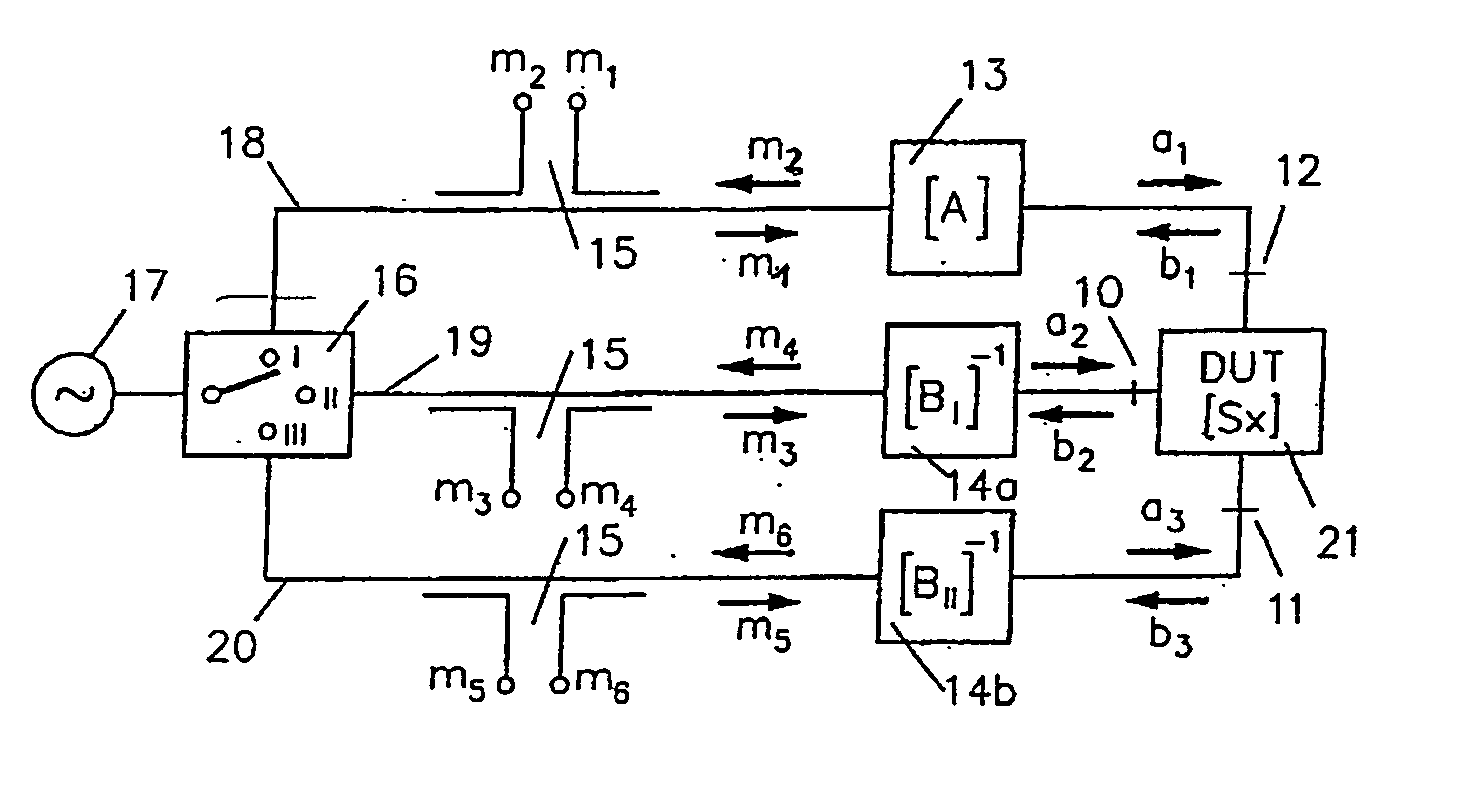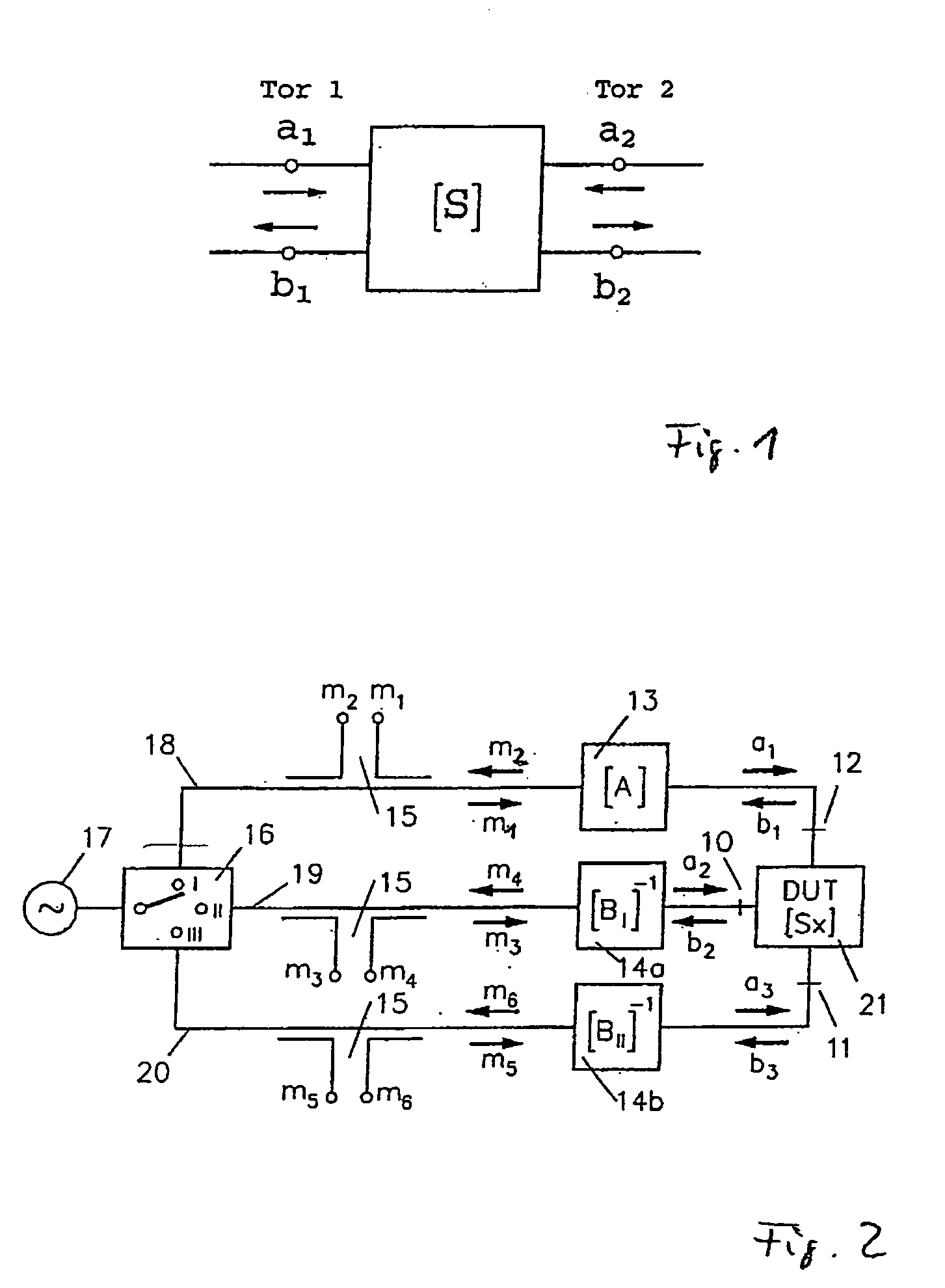Calibration method for carrying out multiport measurements on semiconductor wafers
a multi-port measurement and semiconductor technology, applied in the direction of speed/acceleration/shock measurement, resistance/reactance/impedence, instruments, etc., can solve the problems of large measurement errors, inability to produce the required quality, and the hardware requirements of the calibration standard are considerably complex
- Summary
- Abstract
- Description
- Claims
- Application Information
AI Technical Summary
Benefits of technology
Problems solved by technology
Method used
Image
Examples
Embodiment Construction
[0043] FIG. 2 illustrates how the signal from a source 17 is conducted via a changeover switch 16, whose properties, e.g. reproducibility, reflection and long-term stability, therefore do not influence the measurement accuracy, onto the three branches 18, 19 and 20. The measurement location 15, assumed to be ideal, in each case take up a measure of the incoming and transmitted waves. All deterministic non-idealities and incompletenesses in the form of mismatches and crosstalk are combined and taken into account in the error matrices 13, 14a and 14b. At the ports 10, 11 and 12, the measurement object 21 (DUT) is connected to the vectorial network analyser.
[0044] The measurement values m.sub.n for the reflection and transmission behaviour of realized calibration standards are measured in each switch position at two measurement locations each time. For the RRMT according to claim 1 there are the thru standards of known length and attenuation which are connected between each possible me...
PUM
 Login to View More
Login to View More Abstract
Description
Claims
Application Information
 Login to View More
Login to View More - R&D
- Intellectual Property
- Life Sciences
- Materials
- Tech Scout
- Unparalleled Data Quality
- Higher Quality Content
- 60% Fewer Hallucinations
Browse by: Latest US Patents, China's latest patents, Technical Efficacy Thesaurus, Application Domain, Technology Topic, Popular Technical Reports.
© 2025 PatSnap. All rights reserved.Legal|Privacy policy|Modern Slavery Act Transparency Statement|Sitemap|About US| Contact US: help@patsnap.com



